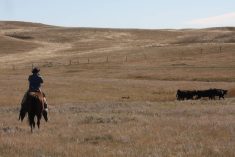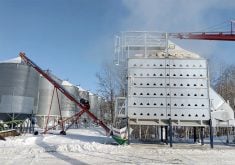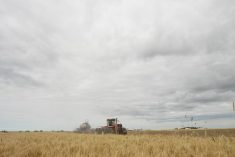African swine fever moves slower through a barn than PED virus, but an increased need for tests would pressure system
The country’s chief veterinary officer made it clear last fall: Canada has the necessary tools to discover a case of African swine fever.
“The CFIA has the laboratory capability and the appropriate surveillance systems in place to detect occurrences of foreign animal diseases like ASF,” Jaspinder Komal wrote in October.
African swine fever is spreading through pig herds in Eastern Europe, Russia and China and was recently detected in Vietnam. It’s a serious viral disease that can cause fever, internal bleeding and high death rates in hogs.
Read Also

Gene editing digs deeper space in Canadian plant breeding
More Canadian research into crop variety development is incorporating gene editing, and one researcher notes that Canada’s regulatory approach to gene editing will help drive innovation
ASF isn’t in Canada, but even with excellent surveillance systems it’s a difficult disease to detect. This means it could be in a pig barn for weeks before it was officially discovered.
“When it comes to swine diseases, many of them look similar,” said Jim Fairles, who works at the University of Guelph’s Animal Health Laboratory and is past-president of the Canadian Association of Swine Veterinarians.
One of the challenges of ASF is it moves more slowly than other diseases, such as porcine epidemic diarrhea.
“African swine fever is a very big virus,” Fairles said.
“It isn’t aerosolized or isn’t excreted … in as big of a quantity as PED.”
With PED, pigs produce a substantial amount of infected feces, which spreads the disease quickly through a barn.
Infected feces, blood and contaminated objects can move ASF from animal to animal in a barn, but most pigs die from the virus.
“With high virulence forms of the virus … death in two to 10 days on average, (and) mortality rates may be as high as 100 percent,” the World Organization for Animal Health says on its website.
There is less time to infect other animals with ASF if a pig dies in a few days.
“It’s not like PED, where it’s going to race through the barn,” Fairles said.
“Death losses will increase slowly.”
It’s crucial for producers to call in a vet as soon as possible If there are any suspicious fatalities so that a deceased animal can be tested for ASF.
The good news is testing can be done quickly because the Canadian Food Inspection Agency has a network of federal, university and provincial animal health labs across Canada.
So a sample would go to a local or regional lab for testing rather than a centralized lab in another province.
“If there is heightened concern, that could be a day or two (to get a result),” Fairles said.
However, it could take longer to complete a test if there was an outbreak of ASF.
In 2018, the Manitoba Pork Council published a report reviewing what happened during the province’s PED outbreak in 2017.
One of the lessons learned was the difficulties caused by a “surge,” in which services and people are pushed to the limit.
“Tests for PED increased dramatically in 2017. In May, the monthly total was 2,772 and by August this figure peaked at 6,799. This peak represented a 978 percent increase over the average monthly number of 695 PED tests in the first quarter of 2017,” the report said, noting provincial lab employees were working overtime for months and became exhausted.
“The provincial lab also explored using other labs in Saskatchewan and B.C.; however, the turnaround times were not feasible.”
Another challenge in 2017 was a shortage of trailers and trucks during the PED outbreak.
“Segregation of equipment results in the need for additional trailers to deal with the ‘clean’ and ‘dirty’ areas in the facilities,” the Manitoba Pork report said.
As well, there are a limited number of swine veterinarians in Canada. If ASF did arrive and get established in part of Canada, swine vets in the region would be pushed to the limit.
The Canadian Association of Swine Veterinarians is educating other vets about ASF so they are able to recognize the disease.
“(There is) lots of communication going to other (livestock) veterinarians,” Fairles said.
“They may come into contact with pigs but not on a regular basis. Between the Canadian Pork Council and the CASV, (we’re) getting the word out to them.”















